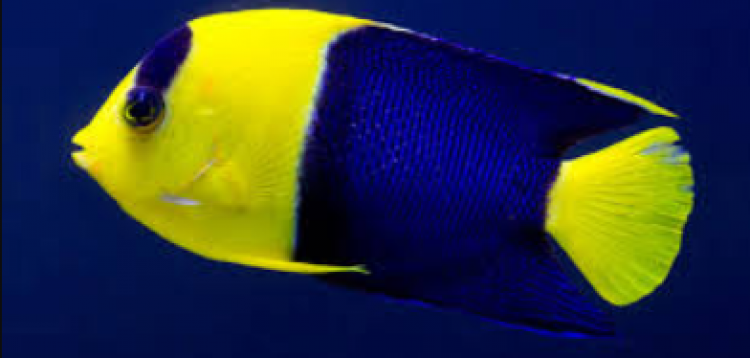- Name:
Coral Beauty Angelfish
(View AKA's) - Family: Pomacanthidae
- Species: Angel Dwarf
- Scientific Name: Centropyge bispinosa





-
Easy
Care Level
-
Semi-Agg..
Temperament
-
Omnivore
Diet
-
0%
Reef Safe
- 78.6
Temp (Temperature)
- 7.965
pH (pH)
- 0
NH3-4 (Ammonia)
- 0
NO3 (Nitrate)
- 0.1
PO4 (Phosphate)
- 6
AT (Alkalinity)
- 400
Ca (Calcium)
- 1350
Mg (Magnesium)
- 1.025
SG (Salinity)
- NAN
ORP (Oxidation Reduction Potential)
- 3
Avg. Size (Inches)
- 65
Avg.Tank Size (Gallons)
- 24
Avg Life (Years)
General info about Coral Beauty Angelfish
The colorful Coral Beauty Angelfish, Centropyge bispinosa, is one of the easiest and most popular angels to care for. Reaching only 10 cm in size, its body and head are a deep royal blue, highlighted with an iridescent orange to yellow. Its coloration intensity and patterning varies on where it was collected in the wild. It adjusts well in a mature home reef aquarium, generally resistant to disease, and a relatively peaceful fish. It requires a 70 gallon or larger tank with lots of hiding places and live rock for grazing. Not a good reef dweller, the Coral Beauty Angelfish is prone to nip at stony and soft corals (sessile invertebrates).
Coral Beauty Angelfish Diet & Nutrition
Just like other dwarf angels,Centropyge bispinosa are omnivores. In captivity, the diet of the Coral Beauty Angelfish should consist of Spirulina, marine algae, high-quality angelfish preparations, mysis or frozen shrimp, and other quality meaty foods. These angels do best when there is algae growing actively in the tank. They should be actively fed 2 to 3 times a day in tanks with less algae for forage, and reduced if the tanks are larger and have more natural food present.
Determining Sex of Coral Beauty Angelfish
All Coral Beauty Angelfish are born female due to their protygenous hermaphroditism. Once they become an adult, the relatively larger individual undergoes sex change to become a male. If the male dies, the next dominant female will turn to male.
Breeding & Spawning Coral Beauty Angelfish
Putting together a large Coral Beauty and a small Coral Beauty in the tank will induce the assumption of their roles as male and female. Coral beauty angelfish will spawn in captivity and some are now being raised, yet raising the larvae is quite a difficult task.
A dominant male will court the female Coral Beauty at dusk or before dimming the lights by soaring above her. He then hovers above her, extends his fins, and tilts at a 45-90 degree angle. The female then follows the male at the top of the aquarium. The male then rubs his nose into the side of the female. They then release eggs and sperms simultaneously at the top for external fertilization. Eggs will hatch within a day and should be fed with microscopic algae after 2 to 3 days from hatching.
Common Diseases with Coral Beauty Angelfish
Coral Beauty Angelfishes are susceptible to the common reef scourges such as parasites like White Spot Disease (Cryptocaryon irritans) or also known as Crypt, and Velvet Disease (Oodinium occelatum) which is a parasitic skin flagellate.
It is also vulnerable to bacterial and fungal diseases as a secondary infection from the parasitic and protozoan diseases. One major bacteria of concern is the Vibrio bacteria. It usually starts as an infection that turns into Dropsy, Popeye, Bleeding or Red Streaks on the skin. It is a very fast acting bacteria that can kill the fish within two days.
Coral Beauty Angelfish Origin
Coral Beauty Angelfishes are widely distributed in the tropical marine waters of the Indo-Pacific Region. Its spread ranges from East Africa (Tanzania, Mozambique, South Africa) to the French Polynesia (Tuamotu Island), in South Pacific, extending northwards to Japan (Izu Islands), and as far south as Australia in Lorde Howe Island.
Caution with Coral Beauty Angelfish
The Coral Beauty may act semi-aggressive to other species, it doesn't pick on smaller tank species unless there is a competition for algae. This species may become territorial if newcomers are added to the tank after it has become established. Angels coming from the same species shouldn't be added together or they will fight to death, unless they differ in sizes.
It is best to keep multiple small sized specimen simultaneously and in large tanks to avoid nipping on corals and other sessile invertebrates, and plenty of hiding places to help "divide the line" in territories.
It is best that they are kept in tanks 90-125 gallons in size to avoid the need to attack everyone that happens to swim by. Dwarf angels such as Centropyge bispinosa should be among the last fish introduced into the tank.
Acclimating Coral Beauty Angelfish
Coral Beauty Angelfishes acclimate well in mature home tanks. Live rocks with algae are important to successfully keep the Coral Beauty Angelfish healthy in captivity, to provide adequate opportunities to dash in and out of the rocks to hide. Enough hiding places will make the fish feel more secure and less stressed.
Original Detail
| Name | Species | Family | Scientific Name | More Detail | Added by |
|---|---|---|---|---|---|
| Coral Beauty Angelfish | Angel Dwarf | Pomacanthidae | Centropyge bispinosa | The colorful Coral Beauty Angelfish, Centropyge bispinosa, is one of the easiest and most popular angels to care for. Reaching only 10 cm in size, its body and head are a deep royal blue, highlighted with an iridescent orange to yellow. Its coloration intensity and patterning varies on where it was collected in the wild. It adjusts well in a mature home reef aquarium, generally resistant to disease, and a relatively peaceful fish. It requires a 70 gallon or larger tank with lots of hiding places and live rock for grazing. Not a good reef dweller, the Coral Beauty Angelfish is prone to nip at stony and soft corals (sessile invertebrates). |
PalaciosAn |









